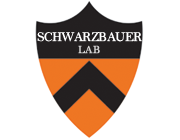The alternatively spliced V region contributes to the differential incorporation of plasma and cellular fibronectins into fibrin clots.
Type
During blood clot formation in vivo, plasma fibronectin (pFN) is cross-linked to fibrin by coagulation factor XIIIa. Cellular FN (cFN), which localizes to connective tissue, is distinguished from pFN by the inclusion of alternatively spliced segments. To determine if these two FNs are functionally equivalent in blood clotting, the cross-linking of rat pFN and cFN to fibrin was compared in an in vitro clotting assay. Fibrinogen and FN were incubated at physiological ratios in the presence of thrombin and factor XIIIa. Cross-linking of FN to fibrin was monitored by SDS-PAGE and immunoblotting. Over 24 h, cFN was incorporated at a significantly slower rate than pFN and was not completely cross-linked to fibrin at a temperature that favors this interaction (0 degrees C). This difference was observed with purified fibrinogens from human, rat, and bovine and with rat plasma and was maintained even after incubation of pFN with rat fibroblasts for several days. Using the same assay, purified recombinant V(+)-V0 and V(+)-V+ FN dimers resembling pFN and cFN, respectively, showed a similar difference in cross-linking kinetics. These results suggest that the asymmetric distribution of the V region among pFN dimers plays a role in regulating its incorporation into blood clots. In fibrin clots, cFN was converted into a set of cross-linked intermediates distinct from those of pFN. For example, while pFN was initially cross-linked into a pFN-fibrin alpha heterodimer, this product was not a major intermediate in clots formed with cFN. This finding, in conjunction with evidence for the formation of factor XIIIa-catalyzed cFN-cFN cross-links, indicated that cFN molecules interact with each other, and with fibrin, differently from pFN. Together, these results show an important functional distinction between pFN and cFN.

